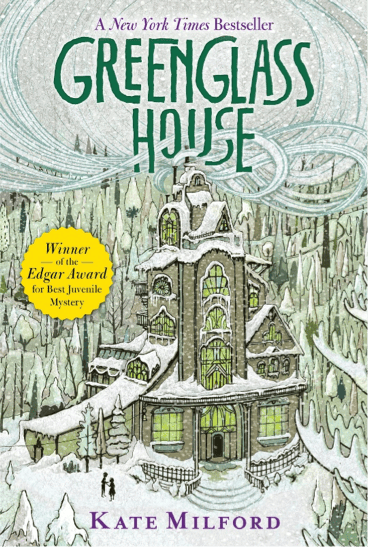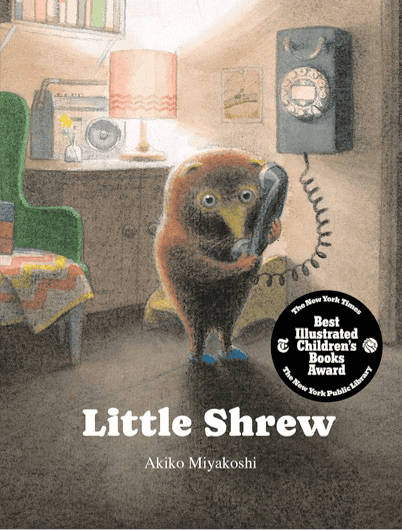
Greenglass House, by Kate Milford
Suggested ages: 10-12 years
Greenglass House was a winner of the Edgar Award for Best Juvenile Mystery in 2015. Since then, four more Greenglass House books have been published, each welcomed by Greenglass House fans.
The mystery tucked into the first Greenglass House book is entwined with the house’s history. It is an inn in the days of smugglers set in the imaginary town of Nagspeake. Milo, the innkeepers’ adopted son, is looking forward to sharing a leisurely Christmas vacation with his parents at the inn. However, soon after he arrives, five mysterious guests check into the inn and suddenly questions and puzzlements abound. What is the reason for each of their stays which appear to be connected to the history of Greenglass House? The mystery deepens when items belonging to each of the guests begin to go missing.
Milo, along with the cook’s daughter, Meddy, immerse themselves in the “game” as they take on imaginary roles, attempting to uncover the background of each guest along with the location of the disappearing objects. Misleading clues keep the reader guessing as to the true nature of each visitor. Besides searching for the answers to the mysteries, Milo gradually discovers a confidence and contentment that had earlier escaped him. Finally, the book’s end, with an unexpected reveal, will motivate young readers to read Ghosts of Greenglass House, the next in the series.

They Hold the Line: Wildfire, Wildlands, and the Firefighters Who Brave Them, by Dan Paley, illustrated by Molly Mendoza
Suggested ages: 8-12 years
This is a timely book for young people, as fires have raged in California recently. Wildfires are very much a threat in our own New Mexico as well. They Hold the Line, a well-researched and detailed book, is a valuable tool for understanding how firefighters today approach fighting the wildfires that seem to have become more prevalent in the west.
Highlighted are the numerous roles that those that fight fires play – the dispatcher, smokejumpers, pilots, swampers, handcrews, sawyers, and the burn boss. Illustrated are the varied tools used in attempting to control fires – a rhino, shovel, Mcleod, Pulaski, combi-tool, chain saw, and more. The various proven methods for controlling wildfires are detailed through words and pictures. Throughout, scientific principles and explanations are provided which support the firefighters’ actions.
The book’s powerful and detailed illustrations in reds, oranges, and yellows provide invaluable support to the text. The book’s final pages include information on fire ecology, history of fire management, and the new approach now taken. Finally, the book closes with “10 Standard Firefighting Orders” and “18 Watch Out Situations,” illustrated pictorially and verbally.
In the author’s note, Paley relates how he and his sons in Southern California stood on their home’s front step watching the Holy Fire in 2018 on a distant ridge. He recalls his sons asking, “Who protects us from those fires?” Paley states, “This book is an answer to that complicated question.”

Little Shrew, words and illustrations by Akiko Miyakoshi
Suggested ages: 4-8 years
From the first pages, the young reader is immediately drawn into the quiet, calm life of Little Shrew. In “Little Shrew’s Day,” one shares in his daily routines as he prepares for work, followed by glimpses of his day at the office, and ending with his weekly chores once home. With a splash of color among the many gray, penciled illustrations, a happy surprise is revealed as Little Shrew solves his Rubik’s Cube for the first time!
The second story, “Little Shrew’s Dream,” tells of Little Shrew’s magical discoveries as he becomes engrossed in his newly obtained TV from a garage sale. Finally, in “Little Shrew’s Friends,” one sees his joyful preparations for his two friends’ visit followed by the endearing companionship, which the three enjoy.
This is a charming book, which highlights the small precious moments in life which we all experience. Routines can bring comfort and contentment but within these patterns one also can discover joy in the unexpected. Little Shrew is one of our many Early Chapter Books.
Children’s Book Reviews are by Nancy Guist.
